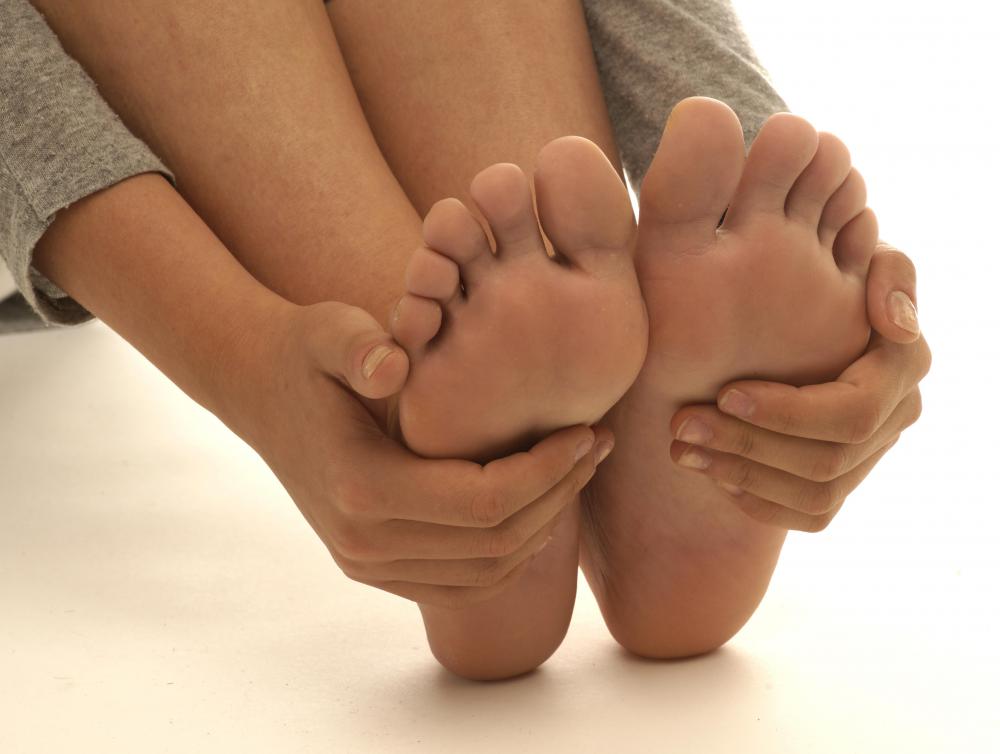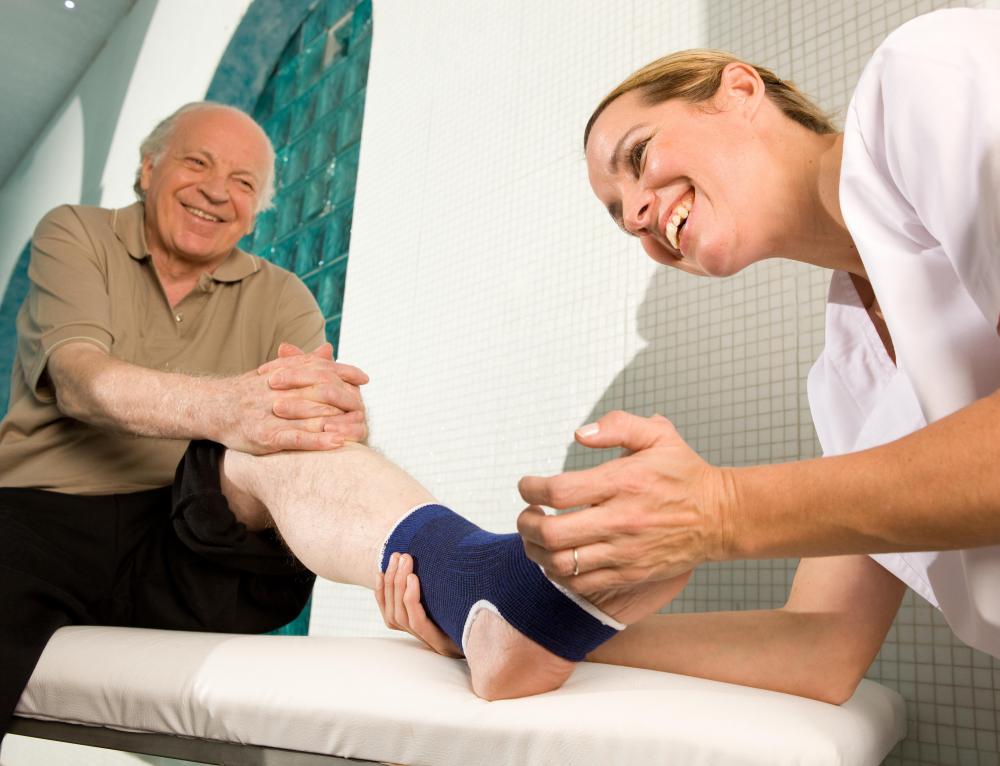At WiseGEEK, we're committed to delivering accurate, trustworthy information. Our expert-authored content is rigorously fact-checked and sourced from credible authorities. Discover how we uphold the highest standards in providing you with reliable knowledge.
What Is Forefoot Varus?
Forefoot varus is a bone-based condition in which the front of the foot is at an angle to the rear part and the ankle. In medicine, pronation is when a part of the body is level, typically in response to gravity. Supination is generally a motion of an area or a joint that resists the force of gravity; if something is supinated, it is often in a lifted up position. With forefoot varus, the front is said to be supinated, or elevated, compared to the rear part of the foot. Sometimes the condition is compensated for by altering the position of the knees or hips, for example; the varus deformity in the foot can lead to problems elsewhere in the body if it is not corrected.
When someone has this problem, his or her toes and forefoot may appear to be in a normal position. Another joint sometimes adds to gravity’s force, or pronates, to compensate for forefoot varus, which can cause the knees to be held together or be spread apart. Compensation can also occur in other parts of the foot, ankle, or hip; people may fully or partially compensate for forefoot varus, or might not do so at all. In addition to other foot problems, people may develop tendinitis, shin splints, sciatic nerve pain, or stress fractures.

Another condition, called forefoot supinatus, is often mistaken for this problem. In this case, the deformity associated with forefoot varus is typically caused by problems with the soft tissue rather than the bone. It is usually caused by a problem with the back of the foot. Physical therapy is often enough to correct the soft tissue form of the disorder, while forefoot varus can be difficult to correct in most people.

Padding is often used under the foot to treat forefoot varus, which provides support to the arch. Sometimes an orthotic product is used to change the motion of the foot. A relatively soft appliance can be worn, but unless a rigid shell is used, tilting the foot into the proper position can be difficult.
Correcting forefoot varus first requires a physical examination by a doctor. The angles of the forefoot, as well as the length and width, are typically measured to gauge how much correction one needs for the problem. Physicians can also take an impression of the foot and examine it, or have a patient ride a stationary bicycle and wear corrective wedges. While the person peddles, a laser is often used to measure knee alignment in degrees.
AS FEATURED ON:
AS FEATURED ON:














Discuss this Article
Post your comments